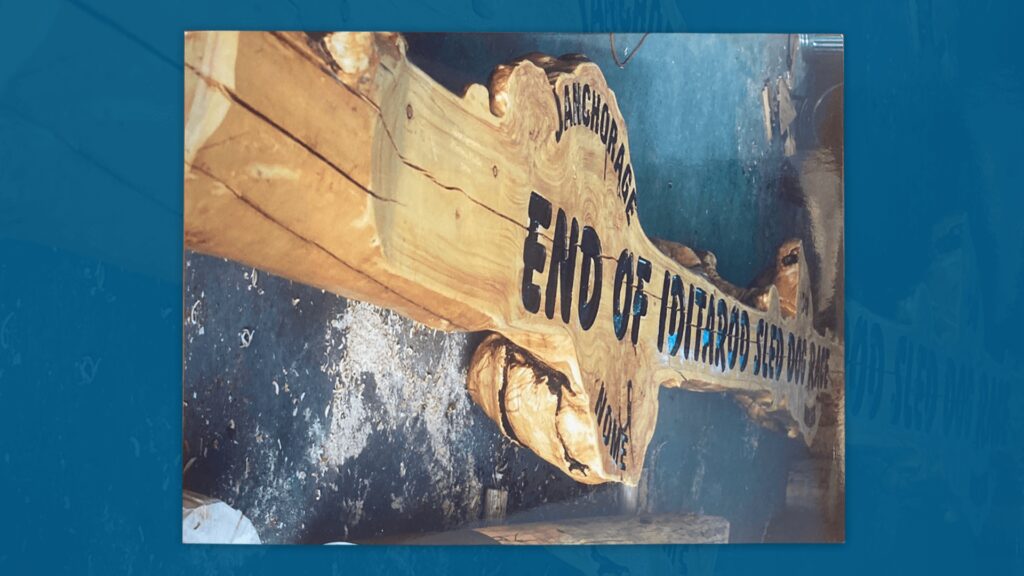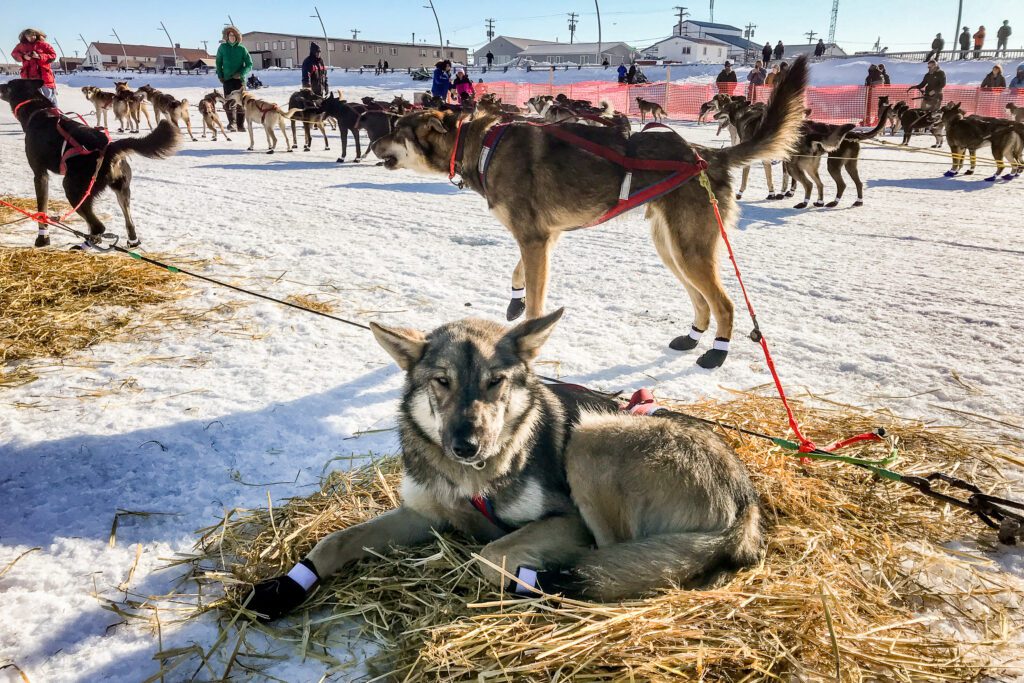Bethel musher Pete Kaiser is 77 miles from his first Iditarod Trail Sled Dog Race victory. But first he must hold off the race’s defending champion, hungry for a repeat win.
KNOM’s Ben Matheson has more from the final major stop before mushers reach the finish line in Nome.
Church bells greeted Kaiser as he pulled into White Mountain just after 8 a.m. for a mandatory, eight-hour break.
For the one last time during the race, Kaiser completes the routine of making straw beds, ripping off booties, and lighting a fire in his cooker to warm ice-cold water he pulled along the Fish River.
Kaiser arrived 41 minutes ahead of Joar Leifseth Ulsom, and he’ll have to defend that gap overnight. The edge is not one that Kaiser is taking lightly. He said could see Leifseth Ulsom’s headlight at some points on the way to White Mountain while he mushed though drifted snow and winds he estimated at 35 miles per hour. Kaiser says that trail across the hilly terrain provided a big workout.
“It really depends how fast you want to go up the hills. You can stand on the runners and go slow, or you can stand and help them and still go slow. They’re relentless hills; we get to do our one yearly, annual hill training at the end of the Iditarod.”
During some years, the run into Nome is a formality, but the sudden wind blasts from the famous “blowhole,” swirling ground-storms, and wide open terrain make last-minute upheavals a real possibility. The coast has already denied one race leader, when Nic Petit’s dogs stalled on the ice between Shaktoolik and Koyuk, clearing the way for Kaiser and Leifseth Ulsom to battle for the win.
The only two ways to make a move up to this point are to run fast or cut rest. Typically, mushers can have one, but not the other. Leifseth Ulsom rested 45 minutes less than Kaiser in Elim and left just five minutes after him. But Kaiser’s dogs were moving fast — thirty six minutes faster over 46 miles to be exact — and he opened up the gap he needs to arrive in Nome as the race’s newest champion. Kaiser was fastest on the last run, but he’s careful to note that both teams have been showing bursts of speed over the last couple days.
“We’ve kind of been flip-flopping. There are some runs my team is faster than his, and some runs his is faster than mine. It’s nice to have a little cushion; it doesn’t mean anything, but we’ll see how that plays out tomorrow.”
Overnight, race fans will watch two athletic mushers who have been racing tightly since the Yukon River make one last push. Kaiser is not letting his guard down.
“He never goes away, and I wouldn’t expect him to. I’m not surprised we’re sitting here after hundreds of miles of travel together… he’s got just as good of shot at winning this as I do. It’ll probably be fun for the fans tomorrow.”
On the river in White Mountain, both mushers were exhausted and were beginning to prepare for an extremely physical run to Nome. Leifseth Ulsom’s strategy is simple.
“Go fast. Go as fast as I can. You give it all, and hopefully it works out.”
Kaiser departed White Mountain Tuesday afternoon at 4:05pm, and Leifseth Ulsom began his run at 4:47. A finish is expected in Nome early Wednesday morning.
Image at top: Pete Kaiser mushing down the Unalakleet River. Photo: Zachariah Hughes, Alaska Public Media.







